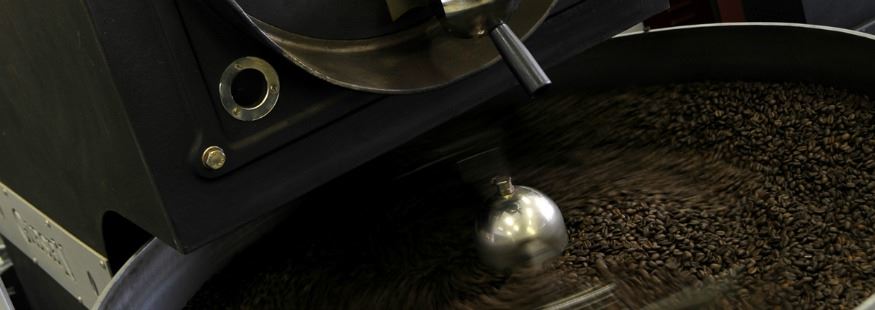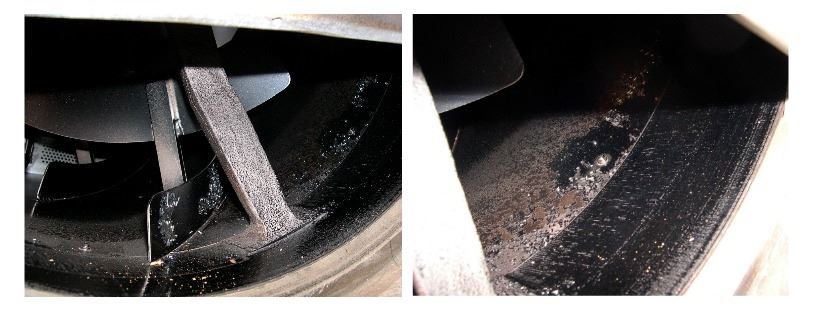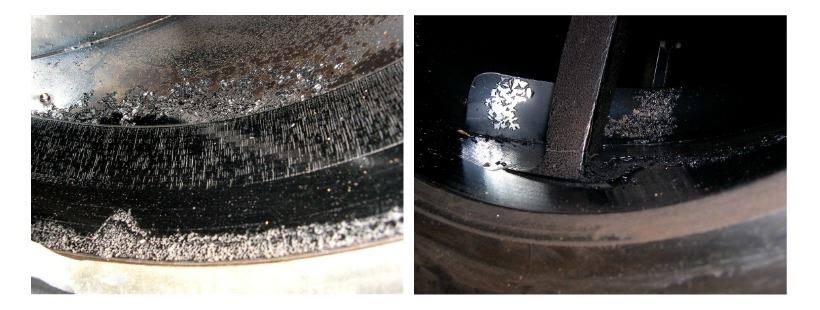The Art of Seasoning

Tis the season…to learn about seasoning your new roaster. Largely due to a growing number of enquiries on the subject, we at Bennetts decided it would be a good idea to write an article on the divisive subject of seasoning a coffee roaster.
We quickly realised that it was too thorny a subject for us green coffee people to attempt so we decided to consult the experts. We asked a few roasters what they thought of the subject and the responses were intriguing.
Basically, the answer was “of course you should season your roaster!” Around six roasts seemed to be the common thread, however the reasons for seasoning and the method used varied. Some (actually most) people advocated approaching second crack to fill the opening pores of the drum with coffee oil. Everyone mentioned using cheap (crappy) coffee. Then we stumbled upon an idea. Jeff Carlin of Carlini Coffee and My Cuppa sent a very lengthy email detailing his thoughts…so we decided to publish it. The first of our ‘Guest Blog’ articles. Jeff is a skilled, passionate and successful roaster, an engineer in a former life, and a frequent coffee blogger. So without further ado, here is his take on the how and why one should season a coffee roaster.
Seasoning Coffee Roasters - Is It Really Necessary?
Having purchased, assembled and commissioned four different types of roasting installations over the last 8 years, I have arrived at some firm views on the so-called “need” to season a new coffee roasting platform, e.g. the drum.
The internet is full of commentary on any and every topic imaginable. Problem is though that much of this content is unregulated, unverified and largely unproven using any form of controlled testing. It is also possible that it may be taken completely out of context to the situation or application you are dealing with at the time.
Anyone can have an opinion and post a theory - you don't need a license, credentials or evidence-based testing.
Coffee roasting equipment generally relies upon the principles of conductive and/or convective heat transfer methods. The coffee roasting process imparts oils and acids which are deposited on the surface areas of the drum and faceplate and other areas where both the product and by-products pass.
The most common coffee roasting design involves a drum style of product agitation constructed using various forms of metallurgy such as mild, stainless, high-carbon steels, alloys or cast iron.
The purpose of a drum is to provide some degree of thermal stability or thermal transfer depending upon the energy source being applied - whether direct on drum, or in-direct around or through the drum area.
The drum also serves the most important role in agitation - using shovels/vanes/paddles to move the product around within the heat source to reduce the risk of heat being applied unevenly resulting in tipping or scorching.
In the last 10 years, the coffee roasting industry has changed from a smaller number of larger providers to a very high number of smaller providers - the physical number of coffee roasting equipment installed and operational has skyrocketed. The industry has a lot of new, novice entrants who are implementing their own coffee roasting equipment and rely upon or use information available on the web as a source of reference – in terms of how and what to do.
Coffee forums are full of questions from beginners not sure about what to do when it comes to seasoning a new roaster. Having read some comments elsewhere, they immediately believe there is a mystical art involved in seasoning.
Some extreme examples of information available on the web include running a new roaster at its upper temperature limits to "season" the drum surface areas (which also include the front faceplate on most drum roasters). It's suggested that through this process the pores within the metal are "opened". This concept has been borrowed from past practices used by owners of cast iron cooking pans to keep the surface "oiled".
This over-heating of a coffee roaster drum is wrong and really quite dangerous - most importantly because a new roasting system has an unknown and inexperienced person using it. One cannot possibly understand or manage the full range of a new roaster - just like a race car, it takes time to become accustomed to the responsiveness.
Many a roaster fire has been caused by this idea of having to season the drum and not having adequate control once the temperature reaches the critical limits.
At a microscopic level, the so-called pores don't exist because most metals are not porous. At certain levels of heat, the minor irregularities found in different metal types - only visible under a microscope - may change in shape or form but this won't affect the operation or function of the drum.
The key differences between metal types can play a role, e.g. cast iron can rust whereas stainless will not. Generally, cast iron coffee roasters will not rust unless they are left unused for extended periods.
When a manufacturer builds a new roaster, it's their intention and hope that the equipment will look beautiful at the time the customer receives the new machine, e.g. shiny and perfect.
Most drum roasters are built in a foundry and then crated and shipped in containers across the world - it might be up to a year from the time the drum was fabricated to the moment it arrives at the customer's premises.
Metals do not like exposure to oxygen, moisture or the elements, so the majority of coffee roaster manufacturers may coat their drum and some surfaces with oils, grease or other materials to preserve the finish of the equipment until the customer is ready to commence roasting coffee.
On my Giesen coffee roaster, after about 4 month of operation I noticed the black surface of the drum had what appeared to be a crinkled and contaminated finish - like someone had spilled paint stripper or acid on the drum surface.


Panic stricken I urgently contacted Giesen in case my drum may have been producing degraded flavour coffee. I was told the coating was intended to wear off over time.
My Joper was shipped with a fine coating of food-grade grease that required cleaning prior to use. The other two roasters I have purchased had no coatings on the drum.
Besides any coatings that a manufacturer may have applied for the protection of the surface during storage and shipping, there is also the aspect of raw metal to consider. Just like a boiler in a coffee machine, drinking storage or vessels, metal needs some surface seasoning to take that metallic taste from the product surface.
Many drums are a hybrid design - using a combination of steels, alloys and metals. As an example, the yoke may consist of cast iron whereas a dual-walled drum will have inner and outer layers of entirely different metals.
Coffee roasting is a dirty business - smoke, dust and debris are constantly accumulating during the process of coffee roasting.
Dark, charcoal-like patina develops on the front faceplate where the friction of moving beans is minimal. A heavily used roaster will still develop carbon-based patina on the bean path regardless of the roast depth.
Another urban myth concerning the maintenance of coffee roasters is the debate about how often you should clean this patina - some are of the belief that you should not clean at all, as the patina is your roaster's individual flavour stamp whereas others believe a clean roaster equals a clean coffee.
The drum does not contribute to enhancing the flavour of the coffee beans once the system has completed more than a dozen batches (although some may argue it takes about > 100x batches).
The seasoning process can be achieved simply by using lower grade coffee beans and running these through the standard or normal roasting profile.
There is no need to go well past second crack to the point of almost combustion - in fact this can be very dangerous for the simple reason you are likely to be using cheap, crappy beans that you have never roasted previously and therefore have no idea of their moisture or density - increasing the risk of unexpected combustion. Often coffee companies will use old, dried out or defective raw coffee to remove the metallic taste from a new drum - this is dangerous and can lead to a fire if taken too hot.
The ultimate truth here on whether to implement a special seasoning program on your new roaster is simply this..............taste the coffee.......it's the only true test.
It is also important to remember that in the early days of running in a new roaster, the initial roasts will not run to plan - so don't confuse a poorly roasted coffee bean with a drum that you think needs special seasoning.


